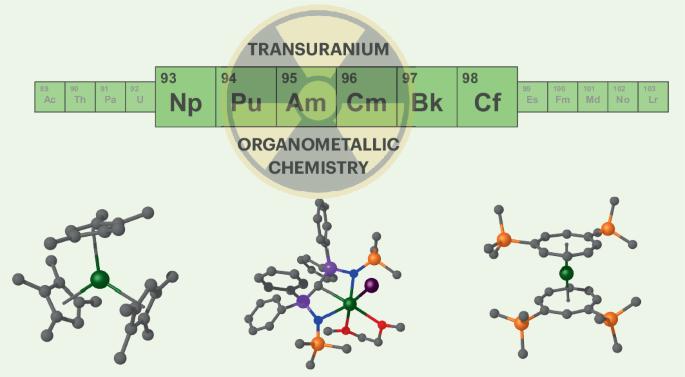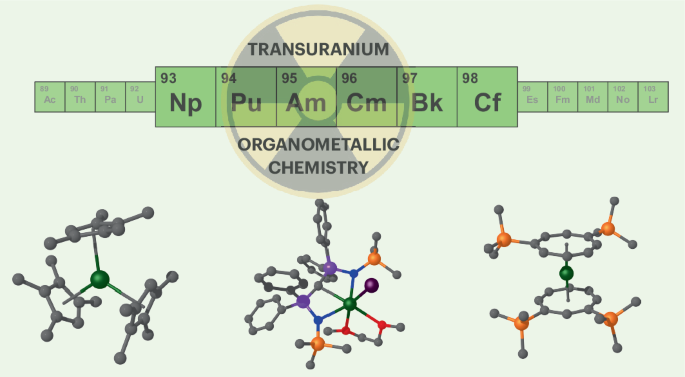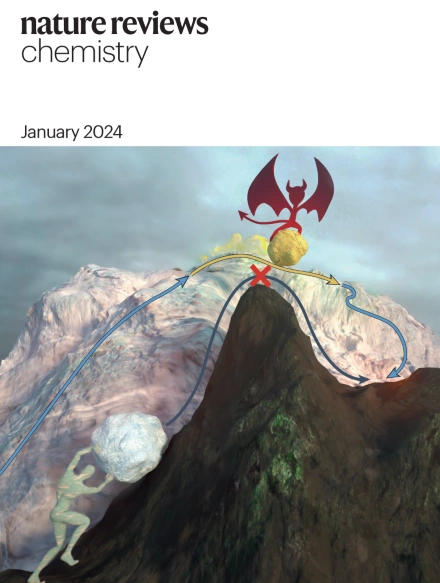超铀有机金属化学
IF 51.7
1区 化学
Q1 CHEMISTRY, MULTIDISCIPLINARY
引用次数: 0
摘要
配位化学是一种通过对环境的控制来揭示元素隐藏性质的工具,这种理解给社会带来了许多好处。对于化学家来说,锕系元素系列代表了一个有趣的前沿领域,传统的化学直觉屈服于相对论效应,非典型的技术挑战影响了进步的步伐。对超铀元素的许多化学认识是在曼哈顿计划期间和之后不久发展起来的,并且是出于实际需要。虽然对它们的基本结合和行为的理论兴趣一直存在,但以合成为主导的探索往往是不可能的。21世纪合成、分析和计算的进步改变了这一点,当代合成超铀配位化学已经开始揭示它们的性质比以前所认识到的更微妙。在这篇综述中,我们讨论了超铀元素的发现、它们的历史和该地区化学进步所固有的后勤需求,并介绍了超铀有机金属化学和精选金属有机化学的关键进展,重点是该领域如何开始成熟。本文章由计算机程序翻译,如有差异,请以英文原文为准。


Transuranium organometallic chemistry
Coordination chemistry is a tool to reveal the hidden nature of elements through controlled manipulation of their environment, and the benefits that this understanding has brought society are numerous. For a chemist, the actinide series represents an intriguing frontier wherein conventional chemical intuition yields to relativistic effects and atypical technical challenges influence the pace of progress. Much of the chemical understanding of transuranium elements was developed during and shortly after the Manhattan Project and was borne out of practical needs. Although theoretical interest in their fundamental bonding and behaviour has always existed, synthesis-led exploration was often not possible. Synthetic, analytical and computational advancements in the twenty-first century have changed this, and contemporary synthetic transuranium coordination chemistry has begun to reveal that their properties are more nuanced than previously appreciated. In this Review, we discuss the discovery of transuranium elements, their history and the logistical demands inherent to chemical advancement in the area, and present key progress in transuranium organometallic and selected metal–organic chemistry, with a focus on how the field has begun to mature. Advances in laboratory-scale characterization have spurred a revival in transuranium organometallic chemistry. This Review discusses the field up to early 2025, framed alongside fundamental properties, past landmarks and future challenges. These exotic species are contrasted against lanthanide and earlier actinide examples.
求助全文
通过发布文献求助,成功后即可免费获取论文全文。
去求助
来源期刊

Nature reviews. Chemistry
Chemical Engineering-General Chemical Engineering
CiteScore
52.80
自引率
0.80%
发文量
88
期刊介绍:
Nature Reviews Chemistry is an online-only journal that publishes Reviews, Perspectives, and Comments on various disciplines within chemistry. The Reviews aim to offer balanced and objective analyses of selected topics, providing clear descriptions of relevant scientific literature. The content is designed to be accessible to recent graduates in any chemistry-related discipline while also offering insights for principal investigators and industry-based research scientists. Additionally, Reviews should provide the authors' perspectives on future directions and opinions regarding the major challenges faced by researchers in the field.
 求助内容:
求助内容: 应助结果提醒方式:
应助结果提醒方式:


